Petzval Lomography Lens 85mm - Product Review | Test Shoot in Mallorca
14855 views since November 24, 2014
Recently we were asked to test the new Petzval Lomography Lens with 85mm focal length and a maximum aperture of f2.2. We were very excited about the request and managed to get the lens just before our trip to Mallorca for some photo shoots in September. Unfortunately it took us way too long to get the product review written but we wanted to make it as detailed as possible and describe everything we experienced - positive as well as negative aspects of the product.
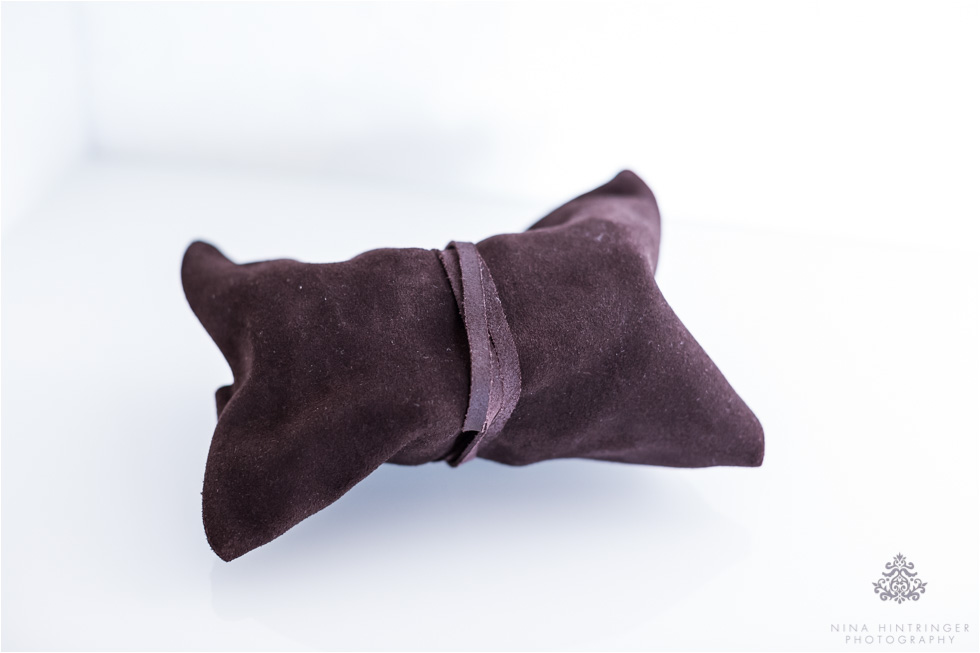
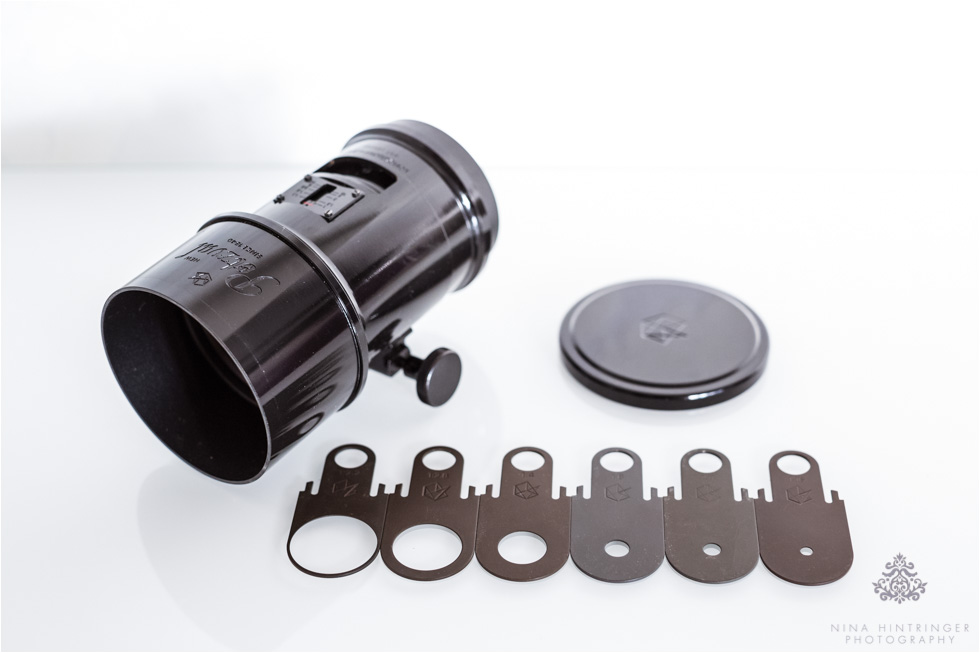
The lens
The Petzval 85mm f2.2 lens feels like it is made of a single piece of brass. Ours was colored black but still looked very worthy. The most significant part of it is the focus wheel which is located on the bottom left side. Our first thought was that it changes focus really quickly - only about a 180 degree turn is needed to turn the focus from 1m to maximum distance. In practical use we experienced that once you got used to it, it worked rather fine. The lens also comes with an integrated lens hood which cannot be detached.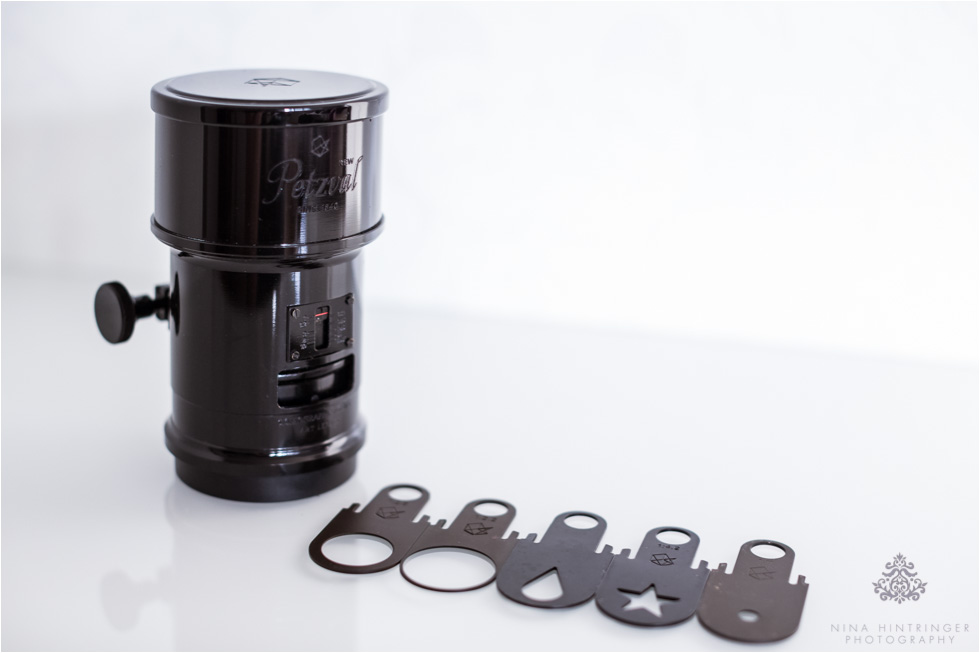
Aperture
One special thing about the Petzval 85mm lens is that you have to insert aperture blades to set the aperture for your image. The lens comes with a set of different apertures, even special shapes. We mostly used the f2.2 and the f2.8 blades.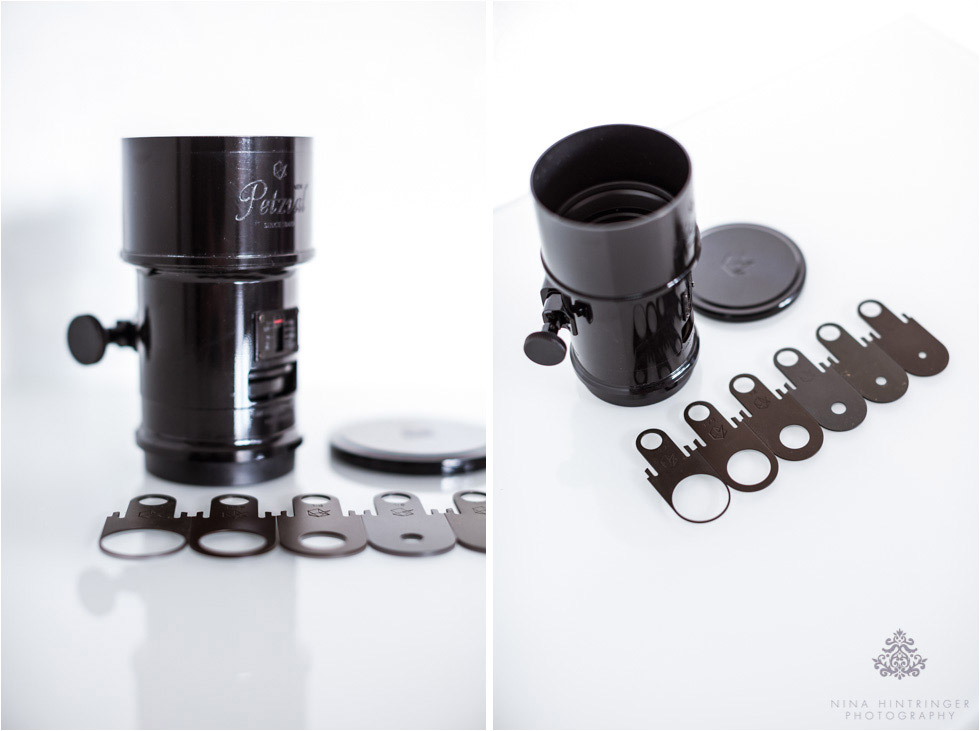
Focus
Of course one of the most important features of a lens is that it focuses correctly. The lens is a manual focus lens. Other premium vendors like Zeiss also produce manual focus lenses, tilt-shift lenses are usually manual focus lenses and some photographers still believe it is better than auto focus (for architecture, still lifes, product photography, etc. it surely is) but even though most lenses use a focusing ring - this lens uses a 90 degree turned handle for focusing just as our 100 year old large format camera Contessa Nettl.This system needs a little bit of training to hold the camera and then turn the focusing handle without moving the subject out of place. Especially when using wide open apertures like the f2.8 or the f2.2 blades the range of in-focus elements gets really small. So the best way we (and other testers) experienced to use the lens is just like macro photographers do: try to get the subject in focus as best as you can and then move the head forward and back until you think the optimal sharpness is reached. This works well and will turn into great results in a relaxed environment but is a bummer during a portrait shoot under extreme time constraints. If you have only ten minutes to take as many great images you can of a once in a lifetime event like a wedding you absolutely need to be able to rely on a focusing system - specially if you are a sharpness junkie like we are - which of course not everyone is. We are one of those who delete all slightly out of focus images without exception and that is why we try to always get at least two shots of a certain situation to have one perfectly in focus.
Also during a shoot at sunset we experienced that a manual focus will stress you out. It`s hard to focus anyway and the sun gets darker and darker within minutes, poses of the couple slightly change all the time and we just love to get the pose and the facial expression as good as possible and then focus is just a thing you don`t want to add to the worry about list.
So to sum that up: focusing works good with the given handle. It needs a little bit of training but the images that are focused correctly are perfectly sharp. Manual focus in general will make your life harder if you have to work under extreme time constraints and if your photographic style demands absolute sharpness.
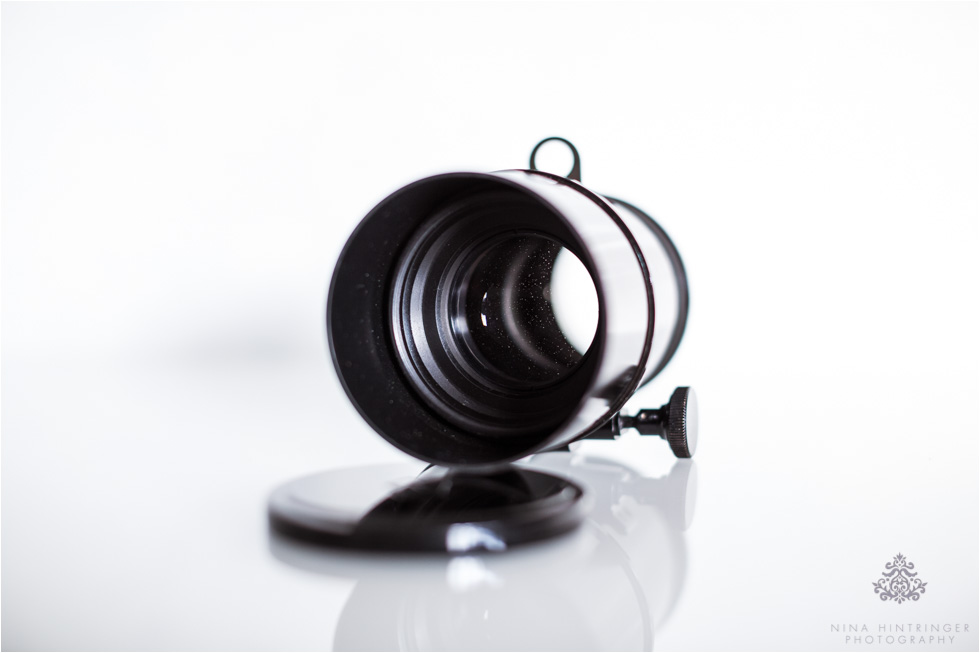
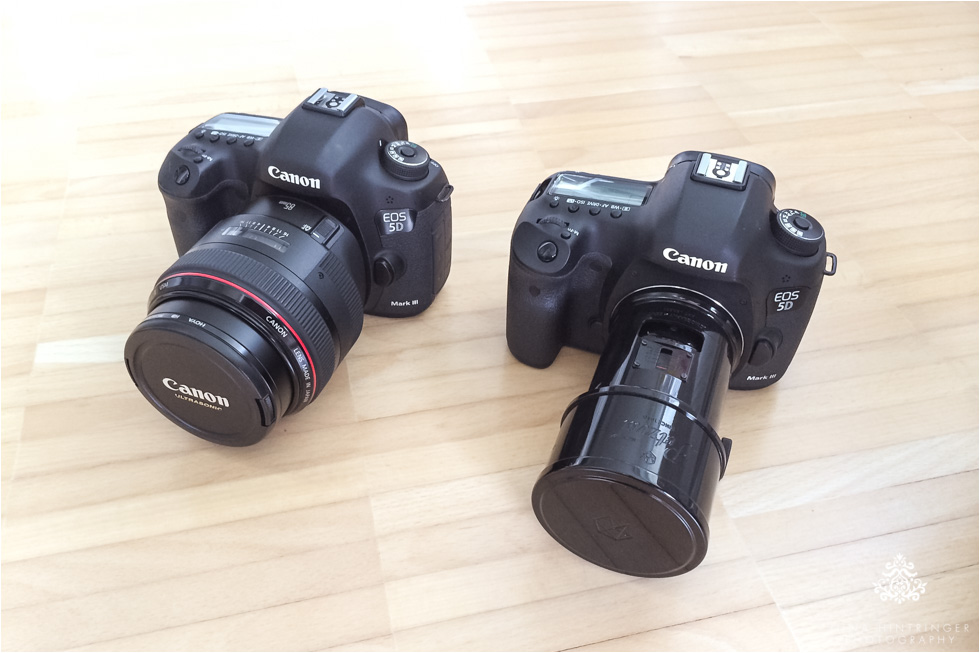
Exposure
We tested the Petzval lens with our Canon 5D Mark III bodies and even though the camera reports aperture `00` the exposure metering works perfectly. Just take a look at the arrow inside the view finder, set the shutter speed accordingly and you are ready to go. So at least with these (and other TTL) cameras there is no difference to using a standard lens. You might be surprised as the lens has no electronic contacts at the bayonet but as TTL cameras measure the light coming Through The Lens (=TTL) no communication with the lens is needed to calculate the exposure. A smaller aperture (e.g. 8) would reduce the amount of light coming through the lens which would then have to be compensated by a slower shutter speed just as you would expect it.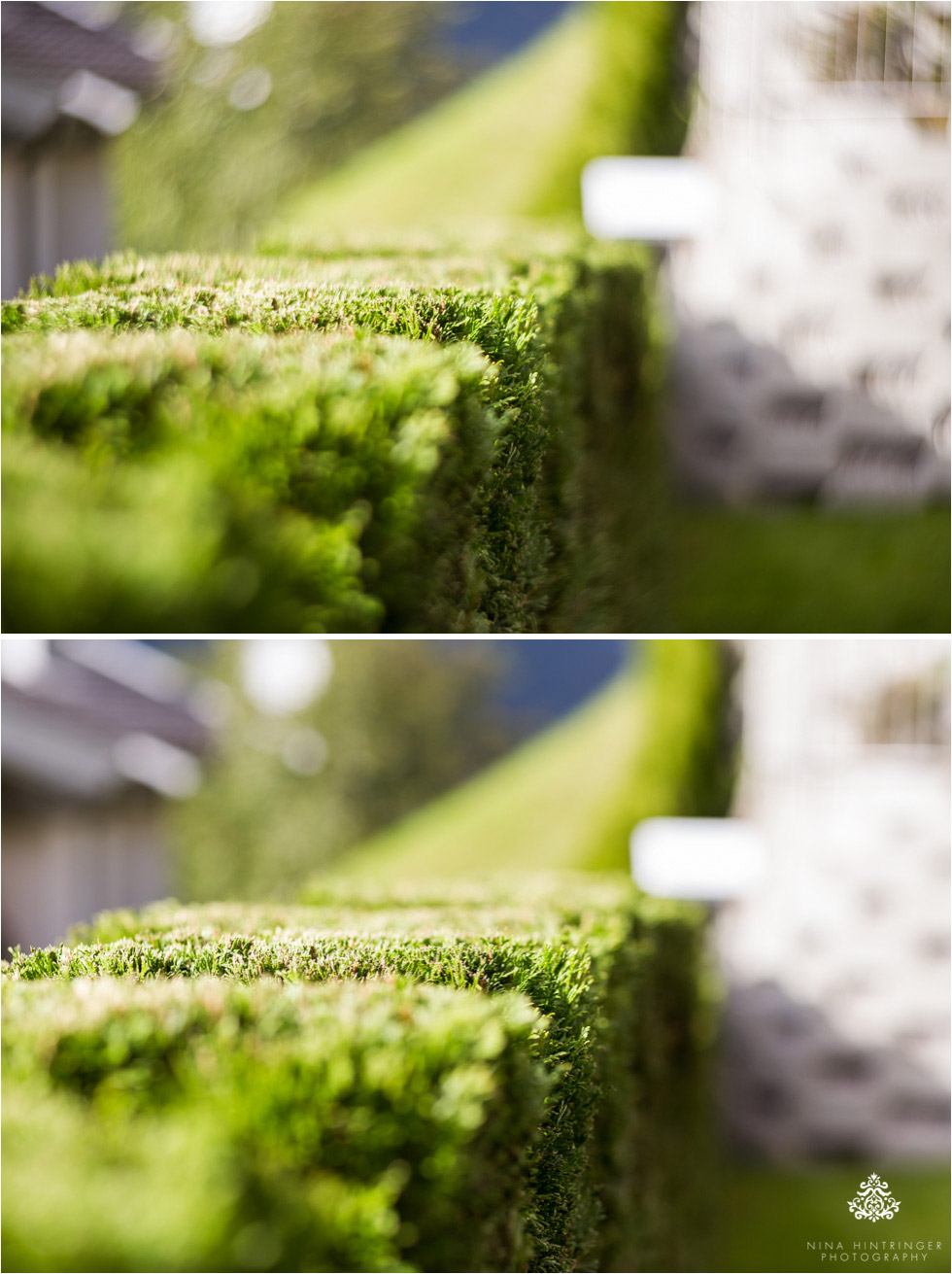
Style
The bokeh of an image is one thing that creates a certain dimension and adds depth to it. This effect can be achieved by photographing with wide open aperture like f2.8 or lower and is also influenced by a focal length of your lens. We love the Canon EF 85mm 1:1.2 L II USM which offers a maximum open aperture of f1.2. We use it a lot for portrait shoots and so we decided to compare this lens to the Petzval 85mm 1:2.2.We set up two identical Canon 5D Mark IIIs with these two lenses and photographed several identical perspectives with the same settings to compare the results. To sum the results up: yes there is a difference in the bokeh between the two lenses which can be seen best when you have textured elements in the background. The Canon 85mm 1.2 photographed at f2.8 creates a constantly blurred background (lower image) compared to a slight twirling effect created by the Petzval lens also photographed at f2.8 (top image).
You can see in the examples, that the difference can be seen best when there is more distance between subject and background and when the background is textured or if you have at least some noticeable elements in the background that can cast the twirling.
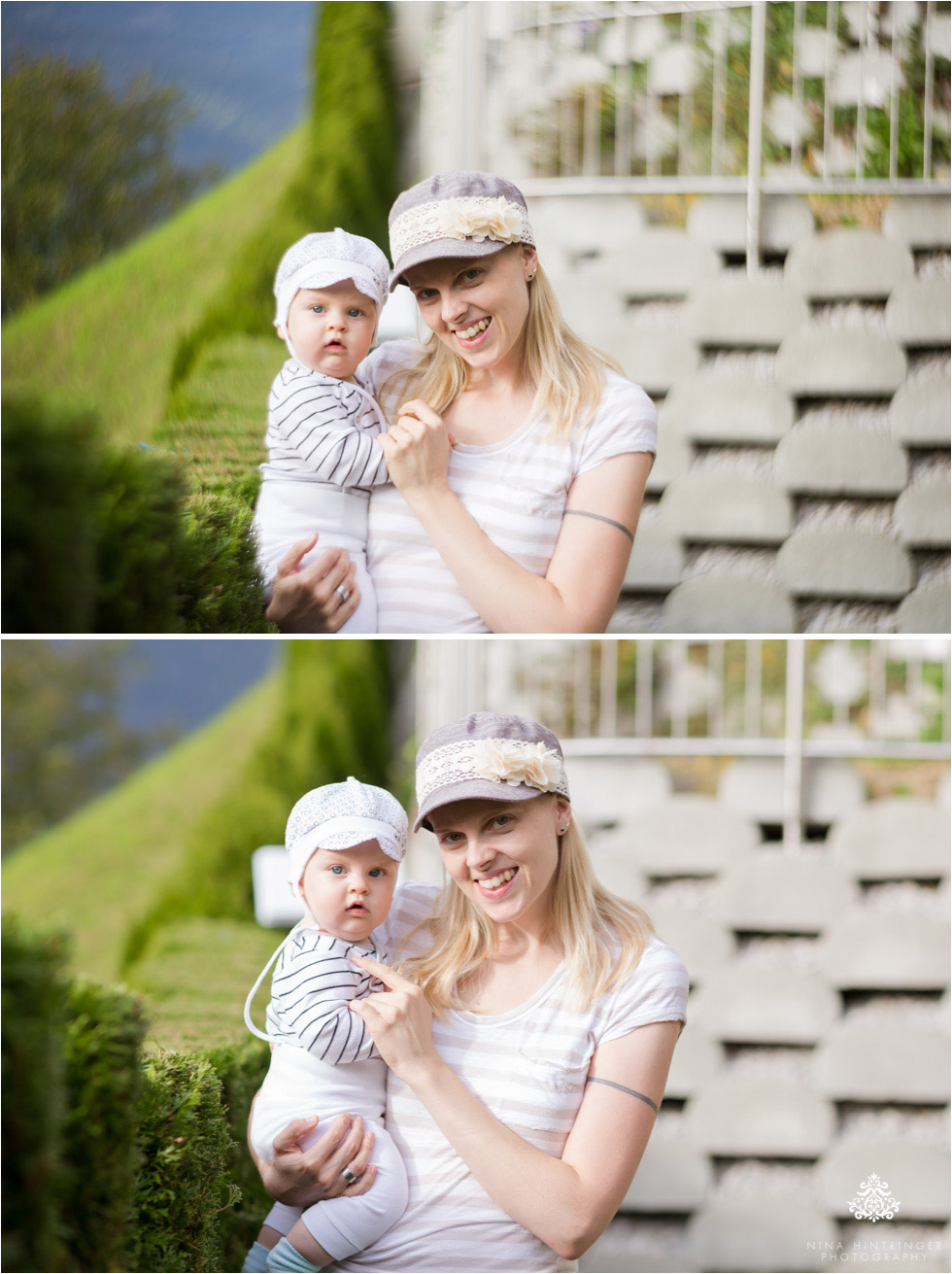
As you can see in these images the Petzval lens produces a more twirled like blurred background in the top image while the Canon 85mm prime lens produces a more constant blur. Both images were taken in manual mode at f2.8. Notice also the difference in the composition - the Petzval lens will twirl blur all contents outside of the middle of the image, so I had to get Nina`s face in the center of the frame. Notice also that Lea`s face already gets slightly out of focus or rather twirl blurred while with the Canon lens in the lower image you can set the composition freely and get both faces perfectly in focus.
For some users that could be a downside for others maybe a creative feature of the bokeh effect of the Petzval lens. So if you place your subject on the side of the frame and put it perfectly in focus you will still experience the twirling effect on it. This can be creatively used but if you want to avoid it the only thing you can do is place your subject in the middle of the frame which might not is what you desire (that`s why it might sometimes be a disadvantage).
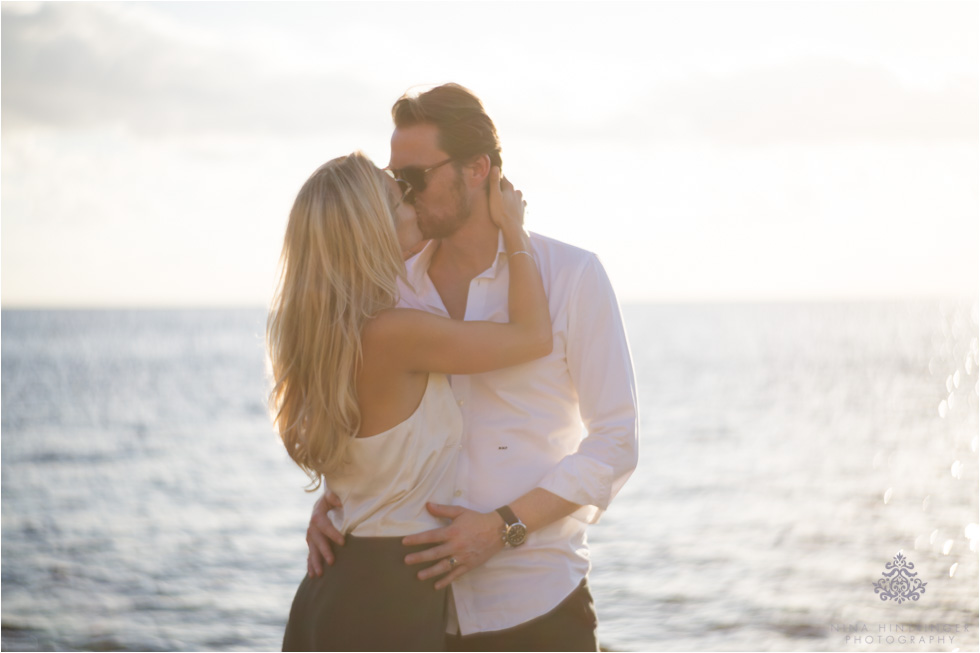
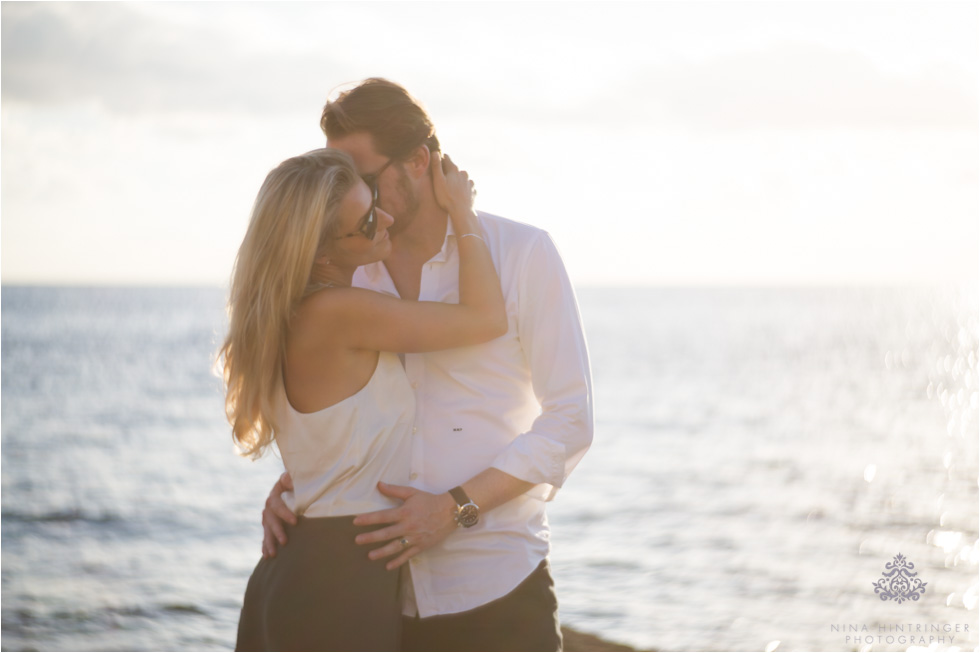
During a couple shoot in Mallorca we used the Petzval lens in a sunset situation. Here when working in low contrast environments we could hardly see a difference in the background blur between the two lenses. This might be because of the low contrast but bright background which makes it hard to see the texture that the lens acutally twirls. Additionally we experienced that focusing manually in such an environment is really hard.
Also you see the difference in color and dynamic range especially in the skin tones of the two lenses in these images - the Petzval lens in the top two images and the Canon 85mm f1.2 lens in the two images below - all 4 images taken in RAW, imported to Adobe Lightroom and not further adjusted (except turned to b&w for the last image).
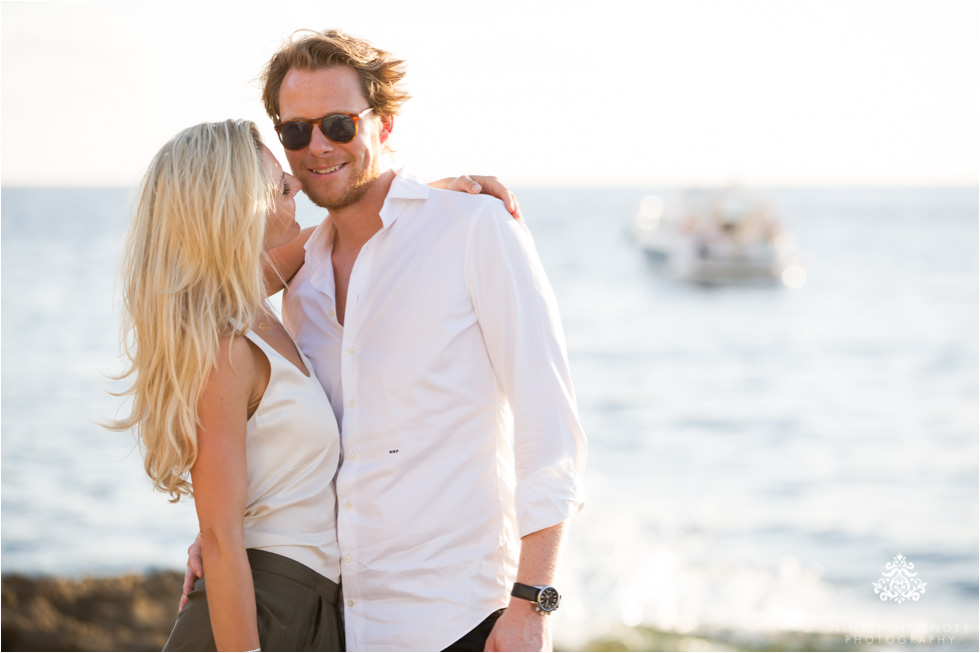
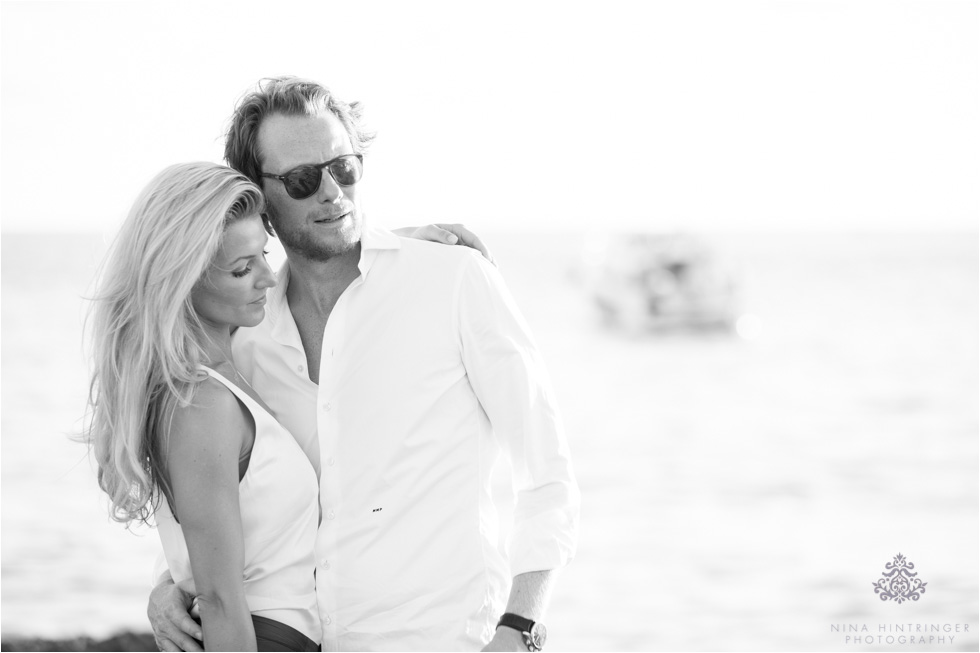
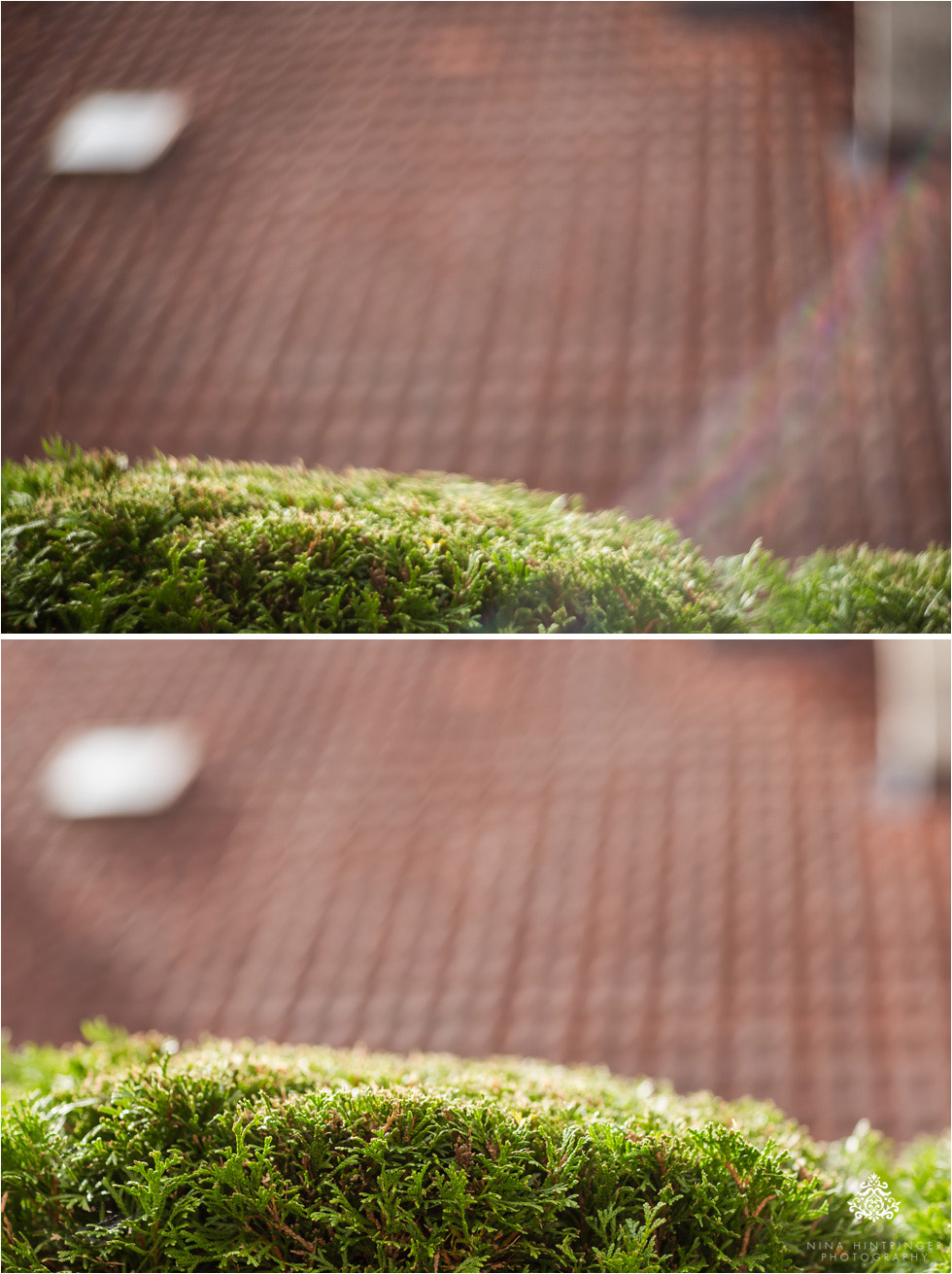
Another thing we noticed is that even though the Petzval lens has an integrated lens hood it produced lens flares when used in backlight situations (top image). Also notice the rainbow like colors in the white shirts of the couple in the images above - a slight rainbow like lens flair can be seen in the image at full resolution. Compared to that the Canon 85mm 1.2 (lower image) we used in the very same light conditions even without its lens hood did not produce these artefacts at all. This may be why the Canon lens produces brighter colors in such situations - compare the green foreground of the top and the lower image. If you are aware of that and you like the effect, you can also use it as a creative feature.
Downsides or things we would like to see being improved in the future
The aperture has to be set manually by inserting the according blade. For most applications this is okay as the aperture is a major parameter to influence the look and feel of the desired image, so most of the time a certain aperture will be set and then used for some time. But the problem with it is that the aperture blade does not sit tight in the slot so it will fall out of the lens once you turn it or let the camera hang on the strap. As we use two cameras for portrait shoots most of the time one is always hanging around ready to get used, so loosing the aperture blade is kind of a no-go then. A quick workaround is to set the focus to maximum because with our lens the blade was stuck in the slot in this position.One thing we can`t tell for sure because of the short time frame we had to test the lens is whether dust can be transported into the lens with changing of the aperture blade or when the lens is carried around without any blade in it. This might be a factor as we can`t retouch dust particles from every image we take and this can be an important issue if you work in dusty environments like we had to during a wedding in Mallorca.
The lens cap is another thing that could be improved. It`s made out of metal and just lightly sticks on the integrated lens hood. So it can easily fall of once you carry the camera on the strap. I don`t want to imagine the sound it would make if it falls of in the middle of a wedding ceremony in a church. So some kind of holding mechanism like normal lens caps have would be nice to feel save.
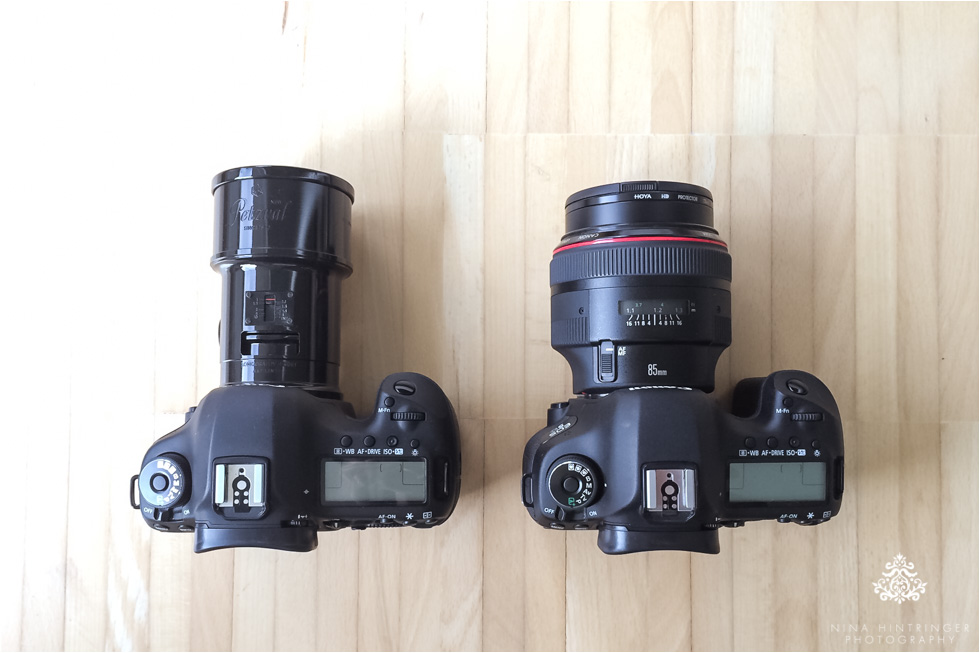
Summary
After using the Petzval lens for a while we can tell that it is quite a good lens with good sharpness and it does add an interesting effect to your images. However you will need to take the possibilities and the constraints of the lens into account when you plan an image in order to get the best out of it - e.g. enlarge the distance to your background so there is more space for the effect to happen, place the subject in center as otherwise it will get twirled too.Compared to another premium lens the difference is mainly reduced to the bokeh effect. If you love it and that is what you were looking for (creative freedom), go and get the Petzval but keep in mind that manually focusing can freak you out if you have to reliably deliver results under time constraints. In these cases - and most of the weddings and couple shoots are somehow stressful as many true emotions (giggles, kisses, looks, etc.) only happen once and are gone within seconds, so you only have a single chance to capture the moment - we will still rely on our premium autofocus lenses. Would this change if the lens had reliable auto focus? Probably not because placing the subjects on the sides of the frame is part of your visual style (see couple images above) and we would not like to have twirling effects e.g. in the subject`s faces.
Of course this review is focusing only on a professional and mainly portrait use of the Petzval lens but that is what we do for living and that is where we would use it. Also some might say it is unfair to compare a ?650 lens to a ?1.800 lens but in a professional environment these are the lenses the Petzval will have to compete with, so we believe it is ok to do and it makes future users see the difference between the two lenses in both directions. Please feel free to decide on your own which one you like more...
Have a look at
Vendors and Links
Posted by Nina Hintringer